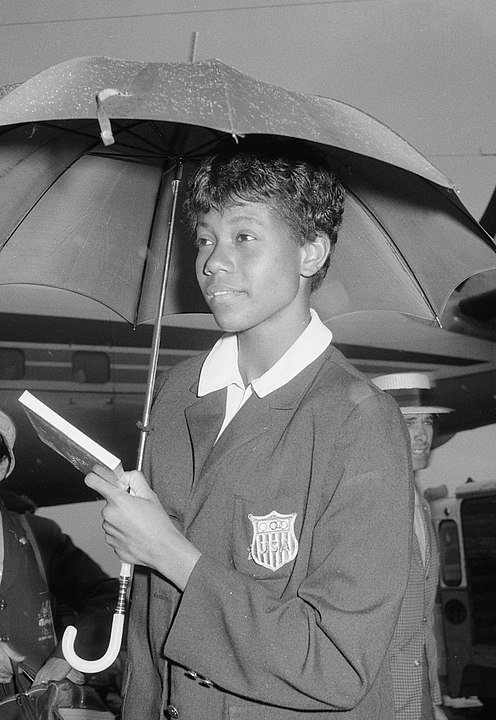Wilma Rudolph’s Early Beginnings: A Child Who Refused to Stay Down
A Fraught Start in the Jim Crow South
Wilma Glodean Rudolph entered the world on June 23, 1940, in Saint Bethlehem, Tennessee, as if life itself doubted her survival. Weighing just 4.5 pounds, the premature 20th child of a blended family of 22 siblings, she faced her first battle in a segregated hospital that turned her Black mother away. Poverty and illness became her cradle: by age five, she’d endured polio, scarlet fever, and pneumonia. The polio left her left leg paralyzed, her foot twisted inward. Doctors declared she’d never walk.
But Blanche Rudolph, Wilma’s mother, spat defiance into the face of prognosis. Twice a week, she carried her daughter on a 50-mile bus ride to Nashville’s historically Black Meharry Medical College, where therapists taught Blanche how to massage Wilma’s withered leg. At home, the Rudolph siblings formed an unyielding relay of care, rotating shifts to knead life back into her muscles four times daily. “My doctor told me I would never walk again,” Wilma later recalled in an interview. “My mother told me I would. I believed my mother.”
The First Steps of a Champion
By 12, Wilma Rudolph shed her leg brace and orthopedic shoe, trading them for bare feet on Tennessee dirt. She chased her brothers through fields, her gait uneven but her spirit unbroken. At 13, she secretly joined a high school basketball game, her legs—once deemed useless—propelling her past defenders. When coach C.C. Gray nicknamed her “Skeeter” for her mosquito-like speed, she laughed, unaware that Ed Temple, Tennessee State’s track coach, was watching. Temple saw not a girl recovering from polio, but a force of nature waiting to erupt.
Wilma Rudolph Overcoming Adversity: The Double Burden of Body and Bigotry
Polio’s Shadow and the Weight of Segregation
Rudolph’s legs carried more than muscle memory; they bore the scars of a society that deemed her inferior. Training in the 1950s South meant racing on dirt tracks denied to Black athletes, boarding segregated buses to competitions, and facing white spectators who jeered her victories. At 16, she arrived at the 1956 Melbourne Olympics as the youngest U.S. track team member—only to see her bronze medal in the 4x100m relay greeted with muted applause back home. “They didn’t even know I was gone,” she later told The New York Times of Clarksville’s white-dominated press.
A Champion’s Stand: Integrating Her Own Victory Parade
Her 1960 Rome Olympics triumph—three gold medals, two world records – made her a global sensation. But when Tennessee’s governor planned a segregated “Welcome Wilma” parade, she refused to participate. “They’ll have to integrate it,” she declared. The governor relented, making October 4, 1960, the date of Clarksville’s first integrated public event. Wilma Rudolph, draped in gold, marched past Shoney’s restaurants that still barred her from sitting down – a living rebuke to Jim Crow.
The Journey to Glory: Rome 1960 and the Rebirth of Women’s Track
The Race That Changed Everything
In Rome’s Stadio Olimpico, under a blistering 104°F sun, Wilma Rudolph became lightning incarnate. She anchored the 4x100m relay, nearly fumbling the baton before surging past Germany’s anchor. Earlier, she’d blazed through the 100m in 11.0 seconds (wind-aided) and the 200m in 23.2, a record that stood for eight years. Reporters dubbed her “La Gazzella Nera” (The Black Gazelle); fans mobbed her for autographs. Yet her proudest moment came mid-race: “I looked over at the stands… and saw Jesse Owens smiling. That’s when I knew I’d done something real,” she recounted in a NBC Olympics feature.
Redefining Womanhood in Sports
At a time when women’s events were dismissed as “not the real Olympics,” Wilma Rudolph’s dominance forced the world to pay attention. Her grace under pressure—and unapologetic femininity – shattered stereotypes. When a male reporter fawned over her “pretty legs,” she smirked, aware that those legs had outrun every prejudice thrown at her, as Runner’s World noted in its retrospective.
Legacy: The Torch She Passed Forward
Mentorship Beyond the Medal Stand
Retiring at 22, Rudolph devoted herself to teaching and coaching, founding a nonprofit to nurture underserved athletes. “The triumph can’t be had without the struggle,” she told students. When Florence Griffith Joyner matched her triple-gold feat in 1988, Rudolph wept: “Every time she ran, I ran,” she confessed in a Chicago Tribune history.
The Unbroken Line of Influence
Rudolph’s 1994 death from brain cancer left a void, but her legacy thrives. Tennessee State’s dormitory bears her name; her foundation still funds young athletes, as detailed by the Women’s Sports Foundation. Yet her truest monument lies in the girls who lace up sneakers, thinking, If Wilma could run through polio and hate, what’s my excuse?
Call to Action
Wilma Rudolph’s story isn’t archived—it’s alive in every underdog who refuses to quit. Visit the Smithsonian’s National Museum of African American History or your local library to explore how her stride still echoes. Sometimes, the fastest way to change the world is to run straight through its barriers.
Breaking Barriers in the Pool: Simone Manuel
Like Wilma Rudolph, Simone Manuel carved history as the first African-American woman to win individual Olympic swimming gold (Rio 2016). Overcoming systemic inequities in a sport shaped by segregation, she now champions diversity through her foundation, fighting for water safety access. Her resilience echoes Rudolph’s truth: greatness lies in dismantling barriers. Dive into her story: Inspiring Athletes.
Photo By Lindeboom, Henk / Anefo – [1] Dutch National Archives, The Hague, Fotocollectie Algemeen Nederlands Persbureau (ANEFO), 1945-1989, Nummer toegang 2.24.01.03 Bestanddeelnummer 911-6074, CC BY-SA 3.0 nl,




